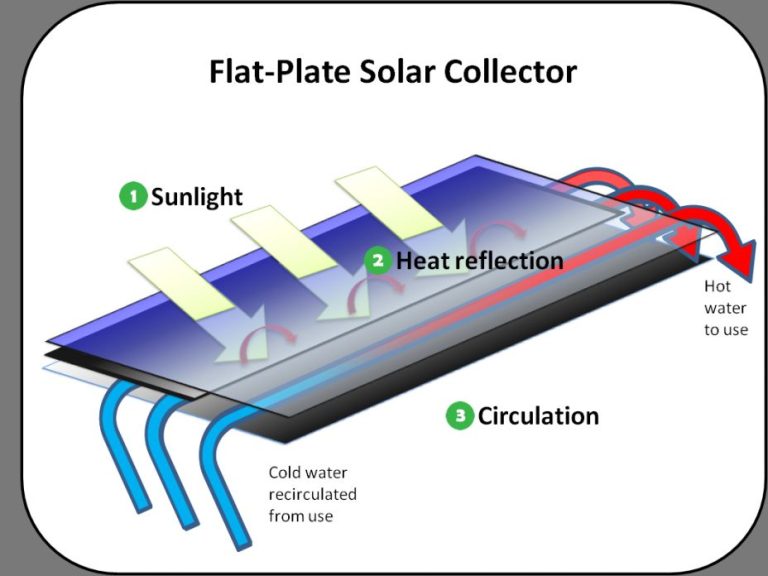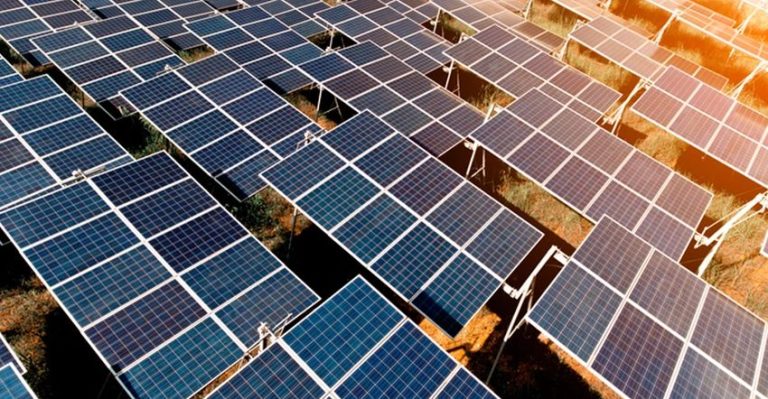Is Sunlight Considered A Resource?
Sunlight, also known as solar radiation, refers to the electromagnetic radiation emitted by the sun. It consists of a broad spectrum of wavelengths, from infrared to ultraviolet. A resource is anything that can provide benefit, support, or aid. In the context of sunlight as a resource, we are examining the ways in which sunlight can be harnessed and utilized for various purposes that are beneficial to life on Earth.
Sunlight drives photosynthesis in plants and is therefore essential for agriculture and food production. It also plays important roles in vitamin D synthesis, setting circadian rhythms, and disinfecting surfaces. As such, sunlight can be considered a natural resource that supports and sustains life.
Sunlight is Essential for Life
Sunlight is absolutely critical for all life on Earth. The sun provides the energy that drives the process of photosynthesis in plants, algae, and some bacteria. During photosynthesis, plants use sunlight, carbon dioxide, and water to produce carbohydrates and oxygen. The carbohydrates fuel the plants’ growth and metabolic functions, while the oxygen is released into the atmosphere. Without photosynthesis, complex life on Earth could not exist.
Sunlight also enables the production of vitamin D in many organisms. Humans and most animals have vitamin D receptors that, when exposed to ultraviolet B rays from sunlight, trigger chemical reactions in the skin to synthesize vitamin D. This “sunshine vitamin” plays crucial roles in calcium absorption for bone growth, modulation of the immune system, and regulation of cellular functions. Deficiencies in vitamin D can lead to rickets, osteoporosis, and other diseases. Given sunlight’s importance for photosynthesis and vitamin D synthesis, it is clear that sunlight is essential for all life.
Sunlight as an Energy Resource
Sunlight has long been harnessed as a renewable energy source through solar technology. Solar power converts the sun’s rays into electricity using photovoltaic cells. While solar energy accounts for only a small percentage of global energy production, it has enormous potential benefits.
Solar power is clean, renewable, widely available, and eliminates reliance on fossil fuels. Solar farms can generate gigawatts of electricity to power cities, while rooftop solar provides distributed energy for homes and businesses. With battery storage, solar offers a 24/7 carbon-free energy solution.
However, solar power has limitations. It is dependent on sunny weather and currently more expensive than conventional power. The technology requires rare earth metals and large land areas for utility-scale projects. Intermittency issues remain until storage capacity expands. Yet innovations continue to drive down costs and improve efficiency.
With further development, solar electricity could sustainably meet a substantial portion of the world’s energy needs. Its environmental advantages provide a compelling reason to grow this renewable resource despite current technological and economic obstacles.
Agricultural Uses
Sunlight is arguably the most important factor enabling plant growth and agricultural production. Through the process of photosynthesis, plants use the sun’s energy to convert carbon dioxide and water into sugars and oxygen. This allows plants to grow and produce fruits, vegetables, grains and other crops that make up the foundation of the global food system.
Greenhouses are specifically designed to maximize sunlight exposure and optimize growing conditions for plants. Greenhouses use transparent glass or plastic walls and ceilings so that sunlight can penetrate inside. Strategic orientation and angle of the roof is used to maximize light capture during colder months. Some greenhouses also incorporate artificial lighting to supplement natural sunlight, especially for commercial operations growing food year-round.
The intensity, duration and quality of sunlight impacts photosynthesis rates and plant productivity. Farmers and greenhouse growers carefully consider sunlight conditions when selecting crop varieties, planning planting schedules and designing their operations. Sunlight clearly serves as an essential natural resource underpinning agricultural systems and food production worldwide.

Health Benefits
Sunlight provides a number of health benefits related to vitamin D production, improved mood, and circadian rhythm regulation. When skin is exposed to ultraviolet B (UVB) rays, the body synthesizes vitamin D3, which plays an important role in calcium absorption and promoting healthy bones. Vitamin D from sunlight may also benefit the immune system, cardiovascular system, and help prevent certain cancers.
Exposure to sunlight, especially in the morning, has been linked to improved mood and energy levels. The bright light helps regulate serotonin, melatonin, and cortisol levels that control sleep and wake cycles. This can relieve symptoms of depression, seasonal affective disorder, and sleep disorders.
Getting natural light during the day supports circadian rhythm, the 24-hour cycle that tells our bodies when to feel awake and sleepy. It helps people fall asleep at night and wake up refreshed. Disrupting this rhythm by not getting enough daytime sun can negatively impact health and sleep quality.
Risks of Overexposure
While sunlight exposure provides many benefits, overexposure can be harmful. The primary risks of overexposure to sunlight are sunburn and skin cancer.
Sunburn is caused by ultraviolet radiation damaging the DNA in skin cells. It leads to redness, swelling, blistering, and peeling of the outer layers of skin. Although usually temporary, severe sunburns increase the risk of developing skin cancer later in life.
There are three main types of skin cancer:
- Basal cell carcinoma – Most common and least dangerous form of skin cancer, but can damage skin tissue.
- Squamous cell carcinoma – More likely to spread but less dangerous than melanoma.
- Melanoma – Most serious form of skin cancer that can spread to other organs.
All types of skin cancer are linked to overexposure to UV radiation from the sun. Melanoma accounts for only about 1% of skin cancer cases but causes the majority of skin cancer deaths.
To minimize risks, it’s important to take precautions against overexposure based on skin type, location, and time of day. Using sunscreen, wearing protective clothing, and avoiding prolonged sun exposure are key to balancing the benefits and risks of sunlight.
Managing Sunlight Exposure
Sunlight provides many benefits, but it’s important to manage exposure appropriately to reduce the risks of overexposure. Here are some recommendations for safe sunlight exposure:
Use sunscreen – Apply broad spectrum sunscreen with an SPF of at least 30 about 15-30 minutes before going outside. Reapply at least every 2 hours and after swimming or sweating. Sunscreen should be used even on cloudy days.
Wear protective clothing – Hats, sunglasses, and tightly-woven, loose-fitting clothes help provide protection from the sun’s rays.
Avoid midday sun – The sun’s rays are strongest between 10am-4pm. Try to limit exposure during these peak hours.
Seek shade – Resting under trees, umbrellas or canopies will help minimize direct sunlight.
Check UV index – Monitor the local UV index, which provides a forecast for the intensity of UV radiation on any given day. Plan activities accordingly.
Don’t use tanning beds – Tanning beds emit intense UV radiation, and should be avoided entirely to prevent unnecessary exposure.
With proper sunlight safety habits, you can enjoy the outdoors while also protecting your skin and eyes from damage. Moderation is key for healthy sun exposure.
Regional Differences
Certain parts of the world receive more sunlight than others due to their location and geography. Areas near the equator like Central Africa, northern South America, and Southeast Asia get the most sunlight due to being located closest to the sun’s equatorial path. Desert regions like the Sahara in Northern Africa also get abundant sunlight due to minimal cloud cover and precipitation.
Regions near the Earth’s poles like Alaska, Scandinavia, and Siberia get far less sunlight due to the tilt of the Earth’s axis. Their long winter nights and short winter days result in much lower annual sunlight. Mountainous regions can also get less sunlight due to their higher elevation and being obscured by other mountains and ranges. For example, valleys and canyons may be in shade for much of the day.
These regional differences in sunlight exposure impact agriculture, weather patterns, energy usage, culture, and human health and behavior. Understanding sunlight patterns around the globe provides insight into how different cultures and ecosystems have adapted to their lighting conditions.
Historical Significance
Humanity has long recognized the importance of sunlight. Ancient cultures often worshipped the sun as a deity due to its life-giving properties. The Egyptians worshipped the sun god Ra, the Aztecs honored Tonatiuh, and the ancient Chinese revered Xihe, the sun goddess. Even today, many religions and spiritual practices incorporate ritual sun worship.
The movement of the sun was also pivotal for ancient timekeeping. Solar calendars tracked the seasons and agricultural cycles by following the sun’s position. The oldest known solar calendar dates back to the Bronze Age and was used in Scotland around 3,000 BCE. Other ancient solar calendars include the Egyptian, Chinese, Mayan, Aztec, and Roman versions. Most modern calendars are still based on the solar cycle.
Overall, sunlight has profoundly impacted religion, agriculture, architecture and many other aspects of human civilization for millennia. Our ancestors relied on the sun’s daily and seasonal patterns to structure their lives. While we now understand the science behind sunlight more fully, it remains an essential energy source that still influences cultures worldwide.
Conclusion
To summarize, sunlight can indeed be considered a valuable natural resource for both humans and the environment. The sun provides the essential energy that powers life on Earth through the process of photosynthesis. For humans specifically, sunlight has many important uses and benefits.
Sunlight is harnessed as an energy source through solar panels, providing renewable electricity and heat. It fuels agricultural growth by enabling plants to produce food. Exposure to sunlight also provides health benefits for humans, including regulating circadian rhythms, producing vitamin D, and improving mood.
However, overexposure to sunlight also carries risks like sunburn, skin damage, and heat stroke. Responsible management of sunlight exposure through sunscreen, clothing, shade, and timing of activities is important. The availability and intensity of sunlight also varies by region and season, requiring locale-specific strategies.
In conclusion, sunlight has been invaluable throughout human history as an energy source, agricultural asset, health aid, and symbol of knowledge and enlightenment. When responsibly harnessed and managed, sunlight qualifies as an essential and versatile natural resource for life on Earth.






